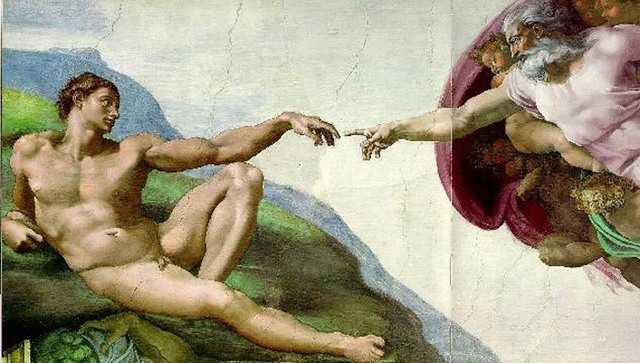
Jesus Christ - A Broader View |
|
Heavenly (God) |
Earthly (Man) |
|
1. Eternal, infinite, changeless, and faithful (Mic 5:2; Jn 8:58; Col 1:17; Rev 1:8; Heb 13:8; 2Tim 2:13) |
1. With a beginning and end, in flesh and blood body (Mt 1; Lk 2:40, 24:39) |
|
2. All powerful (omnipotent) - creator and sovereign (Jn 1:3,10) - over sin and sickness (Lk 7:48; Mt 8-9) - over Satan and death (Jn 5:22, 11:44; Rev 20-21) |
2. Seemingly powerless - tired, tempted, weeping (Mt 26-27) - betrayed and crucified (Jn 18-20) - less than the Father (Jn 5:19; 1 Cor 11:3) |
|
3. Omnipresent – not limited by time and space (Mt 18:20; Jn 1:48; Jn 3:13)
|
3. Limited by time and space (Php 2:5-8; Heb 2:14) - birth and death, within a given time and on schedule |
|
4. All knowing (omniscient) (Mk 11:2-6; Jn 2:24-25; Lk 5:22; Rev 2:23) |
4. Limited in knowledge (Mk 13:32)
|
|
5. Sinless and holy |
5. Sin bearer and judged by God (Is 53; Mk 15:34; Ro 4:25; 1 Co 15:3) |
|
6. Equal with the Father, forgiving sins (Jn 5:18; 10:30, 11:36, 15:13; Lk 7:48; Tit 3:5) |
6. Submitting to the Father (Jn 8:42; Heb 5:8)
|
|
7. Truly God who became man (Jn 1:1-2, 14; Php 2:5-8; Col 1:15, 2:9; 1Ti 2:5, 3:16; Heb 2:14) |
7. Truly man but exalted and glorified (1Cor 15;
Jn 17:2; 17:5; Acts 2:36; Php 2:5-8; Rev 11:15) |
The Chinese concept of the “Tao – the God-Man” also includes the biblical idea of the timeless “Logos” or “Word”
(Jn 1:1-5 and 1 Jn 1:1-2). Like “Tao”, Jesus is “the Way” to God (Jn 14:6; Heb 7:15) and the One uniting God with
humanity. He is also the One who unites Jews and gentiles (Eph 2:11-22), and eventually, in the future, all things
(Eph 1:9-10).
In the Eastern cultures, where strong personal relationships are of utmost
importance and confrontation is to be avoided at all costs, salvation is best understood as a reconciled
relationship vertically with God and horizontally with fellow humans. Man, created in the image of God, enjoyed
close communion with God before the Fall. However, his misuse of the gift of free will brought him punishment and
severed his relationship with God and the created order (relationship with others as well as the natural order).
Yet God initiated a plan of salvation and implemented the process of reconciliation with himself through the
Son.
Another Chinese cultural theme is “honour and shame.” To the Chinese, honour is more important than personal life,
property and power. It is the life goal of an individual to live with and strive for, not only personally but for
the whole family – nuclear and extended, living members, and deceased ancestors. Shame is to be avoided at all
costs, and causing someone to “lose face” is a terrible mistake. Jesus Christ is both the shame-bearer for sinners
and the honour-winner for believers.
To sum up, by adding some Eastern concepts to the traditional Western understanding, Jesus
Christ can be seen as simultaneously human and divine, the Way to God, the mediator and reconciler in broken
relationships, sin and shame bearer, and ultimately the restorer of honour, harmony and unity throughout the
universe.
Author and source of ideas: Enoch Wan, http://www.missiology.org/missionchina/Jesus_Christ_for_the_Chinese_Nov_20001.pdf
To comment on this page, click here
Other Links
|
Seeking the |
See also my husband's site http://www.spirituality-for-life.org
Web design: Eva Peck (using XSitePro site
builder)
Photos: Alex
Peck (unless otherwise noted)
© 2009 and beyond -- All Rights Reserved
Website hosting: VodaHost (unlimited websites and domains at low cost)
Last updated: March
11, 2015

 Facebook
Facebook Twitter
Twitter Digg
Digg Stumbleupon
Stumbleupon